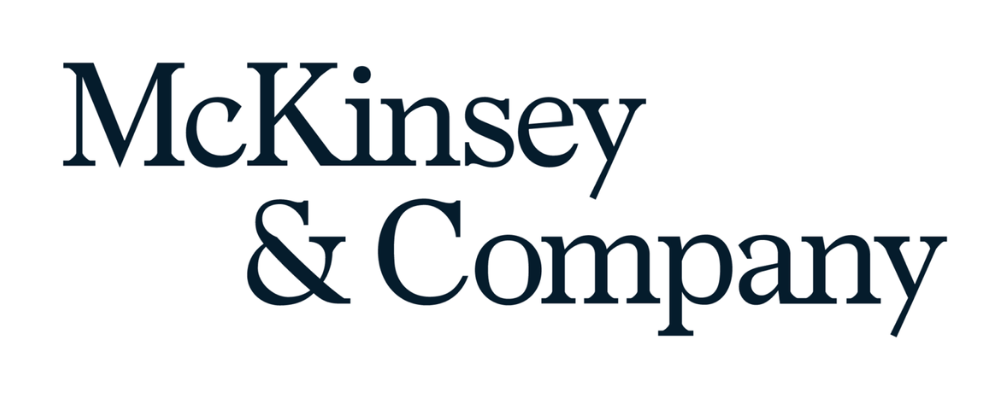Although the momentum has slowed in recent years, a large share of leading companies around the world have set bold decarbonization targets, and in the coming years, many will need to tackle the Scope 3 emissions linked to the materials embedded in their products. This article, which focuses on glass—particularly the flat glass industry—is part of a series of articles on how materials industries can decarbonize and increase circularity, offering an overview for companies within materials value chains and for companies downstream.
Glass forms an integral part of many industrial value chains, from construction and automotive to homeware, packaging, and electronics. Glass production is also a significant source of emissions: As of 2022, more than 150 million metric tons (Mt) of glass (of which about 40 percent is flat glass) are produced each year globally, with an estimated annual life cycle emissions footprint of approximately 150 MtCO2, assuming an average of one tCO2 per metric ton of glass produced.
Finding cost-effective solutions to reduce emissions is critical for the glass industry and the many industries that rely on glass. Although many of the solutions that could lead to deep decarbonization are not yet economical or available on a commercial scale, as explained in this article, one of the most promising options today is scaling up the use of cullet (that is, recycled glass) in combination with full or partial furnace electrification, especially for architectural, automotive, and packaging glass.

Decarbonization challenges in the glass industry today
Many decarbonization levers exist for flat glass, from hydrogen and biogas to carbon capture and storage and electro-boosting. However, three main challenges currently prevent the widespread implementation of these decarbonization levers in the flat glass industry:
- Technological maturity. While several levers that result in a partial decarbonization of operations are mature and scalable today, most of the levers required to fully decarbonize operations are dependent on technology that has not yet been deployed at commercial scale.
- Cost competitiveness. An assessment of the cost of decarbonization technologies shows that most of the impactful technologies are not yet as cost-competitive as conventional technologies are, even in regions that have already put in place a carbon tax, such as Europe.
- Furnace lifetime. Glass furnaces run continuously for a period of several years (often more than a decade) before they are taken offline for a “cold repair.” While glass producers have some flexibility in adapting the throughput of the furnace, the furnace cannot be shut down without the need for a costly investment to bring it back online. As such, the industry preferably matches the switch toward low(er)-carbon technologies with the existing cold-repair schedules to reduce costs and limit business interruptions.
Addressing these challenges is important not only for the glass industry but also for any producer looking to decarbonize its materials portfolio when it includes glass. There are several actions that industry players—suppliers and customers alike—could take to accelerate decarbonization efforts across the value chain.
Emissions vary across the value chain
Emissions are split across the glass value chain:
Raw materials. Approximately 20 to 25 percent of emissions come from upstream production (mining, quarrying, processing, and so on) of materials such as silica sand, soda ash, and limestone.
Mixing, melting, and forming. Approximately 65 to 70 percent of emissions come from the melting process, which requires temperatures of 1,200°C to 1,500°C or more. Out of these emissions, 20 to 25 percent are intrinsic to the chemical process and directly related to the use of soda ash and limestone as raw materials.
Downstream processing. Approximately 5 to 15 percent of emissions come from downstream processing, including annealing and cutting.
These estimates exclude transportation emissions, which vary widely based on the location of raw material suppliers, glass producers, and customers.
Emissions also vary by player
There is a wide spread in Scope 1, 2, and 3 emissions intensity between the lowest- and highest-emitting players in Europe. These differences are caused by five main drivers:
Raw materials: use of different types of raw materials (notably synthetic versus natural soda ash), which themselves can be produced using different technologies
Melting technology: the energy source used in the melting process, especially the relative share of natural gas and electricity
Energy efficiency: use of energy efficiency measures in the melting process, such as preheating of the raw material batch, heat recovery, or oxyfuels
Cullet rate: relative use of recycled glass (called “cullet”) versus virgin materials, which lowers energy consumption and avoids the release of process emissions
Glass type: the type of glass that is being manufactured—for instance, cover glass for electronics requires raw materials (such as alumina) and downstream processing that are different from the flat glass used in construction and automotive sectors, resulting in an overall higher emission intensity
Abatement levers are available to decarbonize glass feedstocks and production
Producers have several options to reduce emissions from upstream raw material feedstock production and glass production—options that go beyond the energy efficiency levers outlined above.
For raw materials, the majority of emissions stem from the production of synthetic soda ash. Several levers exist to reduce emissions stemming from soda ash, including the following:
- Recycled glass: increased use of cullet as a substitute for soda ash, which fully eliminates the emissions resulting from the soda ash production process
- Natural soda ash: substitution of synthetic soda ash with a natural counterpart (trona) that can be produced at a lower emission intensity, the supply of which is currently concentrated in the United States, China, and Turkïye
- Low-carbon soda ash: a shift toward an alternative low(er)-carbon production process for synthetic soda ash
For glass production, the majority of emissions result from the heating of furnaces with natural gas and the release of process emissions from raw materials. Abatement levers include the following:
- Recycled glass: increased use of cullet as a substitute for soda ash, which avoids the release of process emissions during the smelting process
- Alternative heating methods: substitution of natural gas with biogas (which can be done without changes to the furnace design) or with electricity or hydrogen (both of which require changes to the furnace design)
In addition to these levers, producers could choose to capture and store or reuse the carbon that is released during the production process.
Maximizing the use of cullet in the raw material batch in combination with using biogas, hydrogen, or electricity in the furnace could jointly enable greater than 90 percent decarbonization at the asset level. For example, a leading glass company achieved close to 100 percent decarbonization by combining cullet and biogas in a pilot test. The company also formed a technological partnership to achieve more than 75 percent decarbonization in a smaller-scale float by maximizing cullet use and implementing a novel design for a hybrid natural gas–electricity furnace.
These pilots show that there are several technological pathways to full decarbonization of glass production at the asset level. However, there are limitations to the scalability of these solutions for the entire industry due to limited availability of feedstock. For example, cullet can cover only about 10 to 15 percent of virgin raw material demand, and biogas is not always readily available in the vicinity of existing floats.
Cullet (recycling) rates stand to be much improved
For many decarbonization levers, cost competitiveness strongly depends on the location of the asset and carbon policies. By contrast, using cullet can be more cost-effective than virgin raw materials in most regions, especially in densely populated areas close to float operations. In a scenario where the float is running exclusively on cullet, Scope 1, 2, and 3 emissions could be reduced by 30 to 40 percent.
Despite this, the average recycling rate for flat glass is currently only about 20 percent in Europe, according to McKinsey analysis. The reason for the low recycling rate is twofold:
- Lack of flat glass waste collection. In many countries, there is no postconsumer collection system for flat glass, so flat glass waste ends up in landfills.
- Downcycling into other glass applications. Flat glass has much more stringent quality constraints—such as lower tolerance for ceramic inclusions and more stringent specifications on chemical composition—than packaging glass. Therefore, contaminated, postconsumer flat glass cullet is typically downcycled into packaging or other applications with less stringent quality constraints.
As such, unlocking the full potential of cullet as a cost-effective decarbonization lever will require the setup of new supply chains that enable economical collection of flat glass and reduce the risk of contamination. This could be achieved through initiatives such as return schemes between glass installers and producers or national collections schemes (for example, similar to the Netherlands, where flat glass collection rates are about 75 percent, according to McKinsey analysis).
There are three main actions that could accelerate decarbonization in the flat glass industry, thereby creating widespread benefits for a broad range of industries that rely on glass for their own manufacturing processes:
- Set up new cullet value chains. More than 80 percent of flat glass in Europe currently ends up in landfills. A large share of this could be recovered economically by setting up new “reverse” value chains that avoid contamination of glass with other materials and ensure separation of glass types to limit downcycling. One way to achieve this could be fostering industry-wide collaboration to set up dedicated flat glass collection points or establishing return schemes between glass producers and window installers. Governments can also help accelerate collection by putting in place targeted policies (for example, on the use of recycled content or target recycling rates) or increasing overall awareness of the positive impact of glass recycling for stakeholders along the entire value chain.
- Double down on technological innovation across the value chain. The decarbonization potential of cullet is limited to about 10 to 15 percent at the industry level due to the limited availability of cullet. As a result, the industry will have to double down on maturing low-carbon technologies that have not yet been proved on a commercial scale but that have the potential to become cost-competitive alternatives to conventional technologies. This notably includes shifting toward fully electrified furnaces and alternative production methods for soda ash production. Carbon capture technologies will also be required to take out the remaining process emissions from the furnace. The industry can accelerate innovation by focusing trials on smaller assets in their network and accessing national or other subsidy schemes (for example, the European Innovation Fund), thereby reducing overall risk and investment costs.
- Invest in cross-industry partnerships. The decarbonization cost of low-carbon technologies can often be improved through collaboration across industries, for example, by sharing the infrastructure costs of carbon transport or low-carbon hydrogen production. As such, the industry can actively explore these partnerships, especially for assets that are part of broader industrial clusters.
Doubling down on decarbonization actions could enable first movers to develop unique competitive advantages, such as access to raw materials, cutting-edge technology, and reduced exposure to future carbon taxes. However, creating the future glass industry will take collaboration and a value chain approach to truly scale solutions and build circularity—and value—for everyone.
“Our firm is designed to operate as one—a single global partnership united by a strong set of values. We are equally committed to both sides of our mission: attracting and developing a talented and diverse group of colleagues and helping our clients create meaningful and lasting change.
From the C-suite to the front line, we partner with clients to help them innovate more sustainably, achieve lasting gains in performance, and build workforces that will thrive for this generation and the next.”
Please visit the firm link to site


